Abstract
The results of experiments to investigate antibody to 'virus infection associated' (VIA) antigen in cattle repeatedly vaccinated with formalin- or acetylethyleneimine- (AEI) inactivated foot-and-mouth disease (FMD) vaccines under laboratory conditions are reported. Results are also presented from some vaccinated animals subsequently exposed to FMD infection. Antibody against VIA was not detected before and after the first vaccination with formalin or AEI-inactivated vaccine but did develop in all animals after the second formalin vaccination and persisted throughout the experiment. After the second AEI vaccination, 4 of 12 animals developed antibody which persisted for at least 37 days. This transient response in some cattle was repeated after successive vaccinations but, in general, more animals responded as the number of vaccinations increased. After exposure to infection a transient VIA antibody response was occasionally observed in immune AEI-vaccinated animals. Some immune repeatedly AEI-vaccinated cattle did not develop detectable VIA antibody after challenge despite the persistence of virus in oesophageal-pharyngeal (O/P) fluid. The presence of antibody to VIA antigen is not conclusive proof that vaccinated animals have been exposed to infection and field data must be interpreted with caution.
Full text
PDF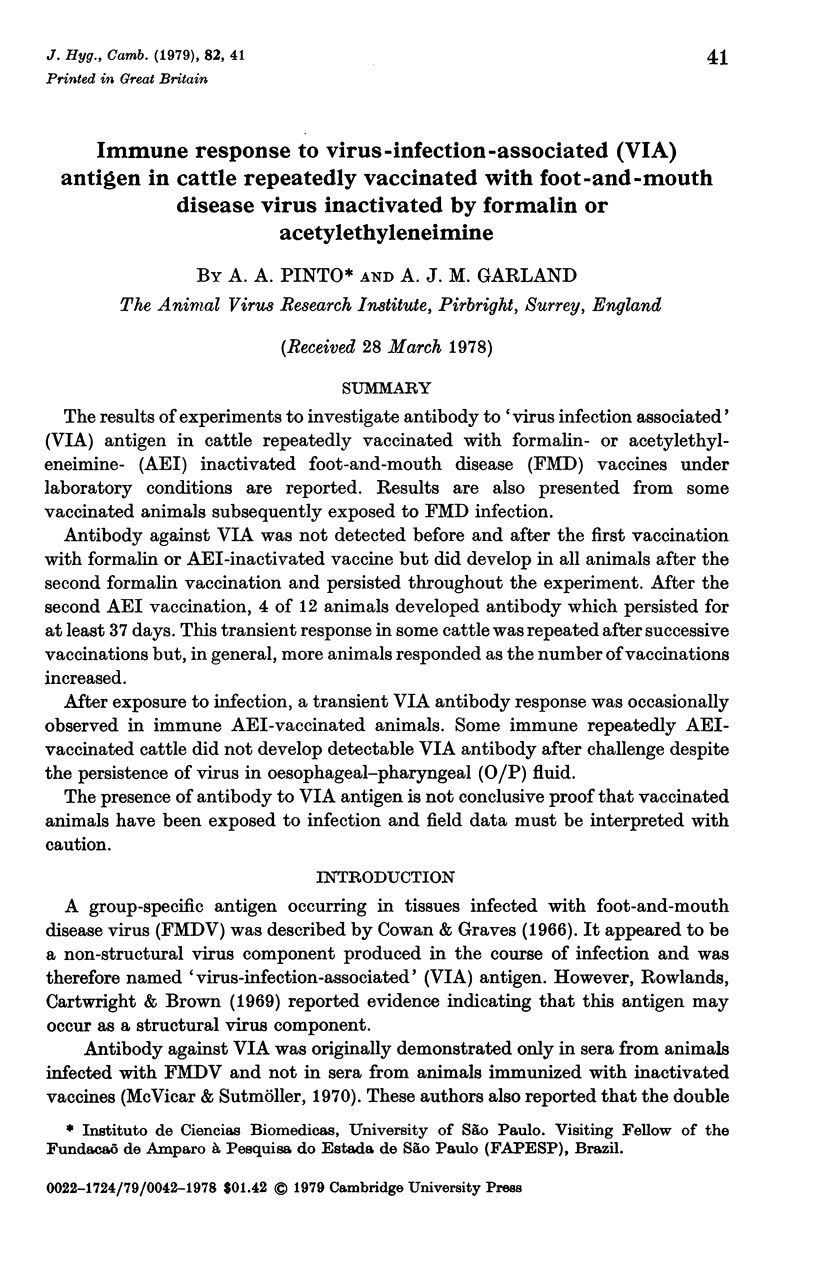
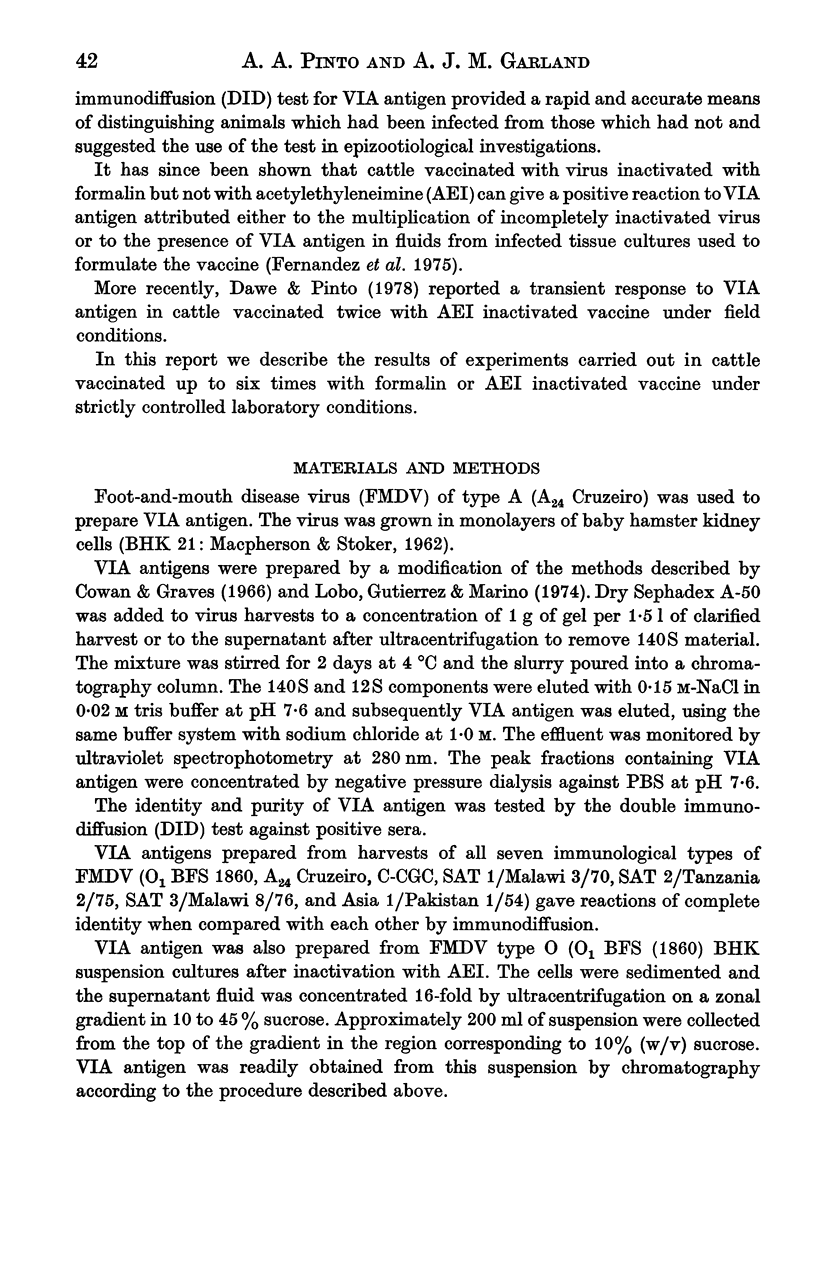
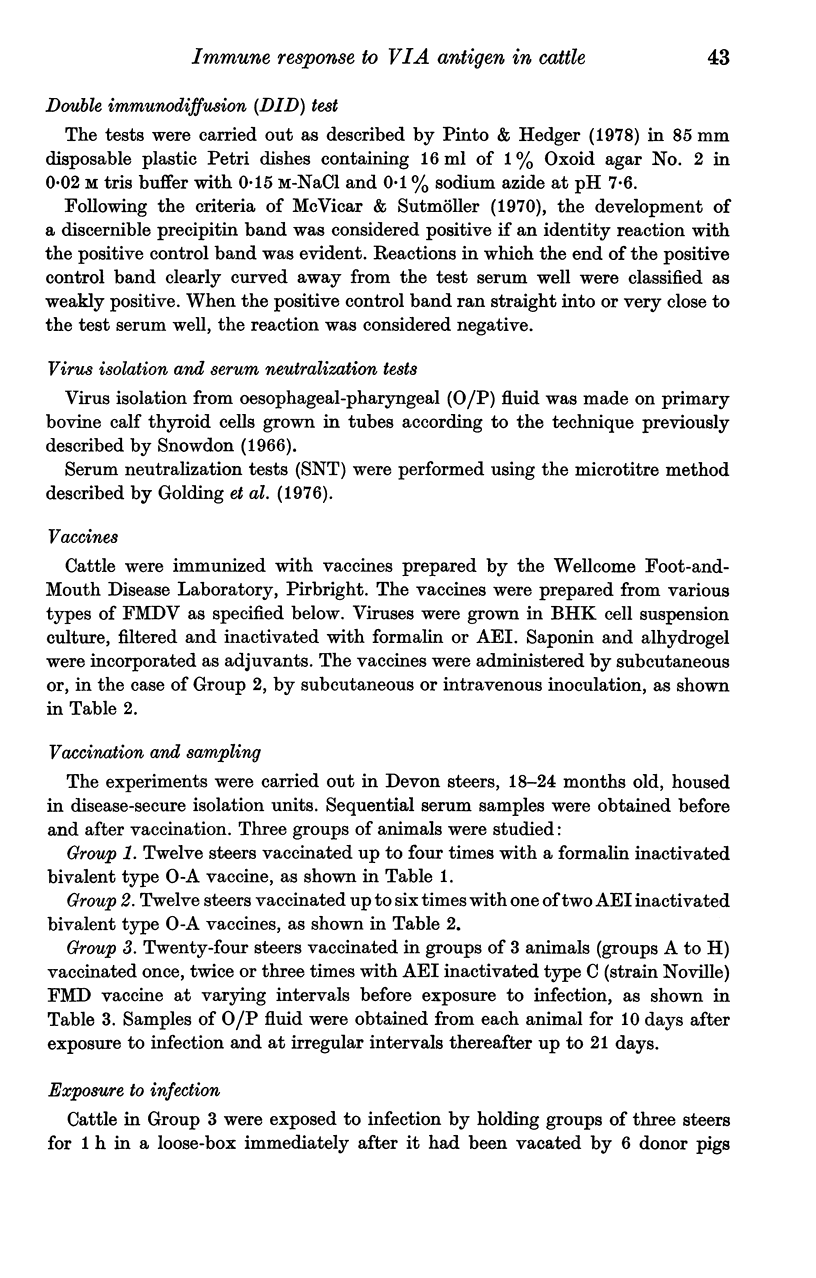
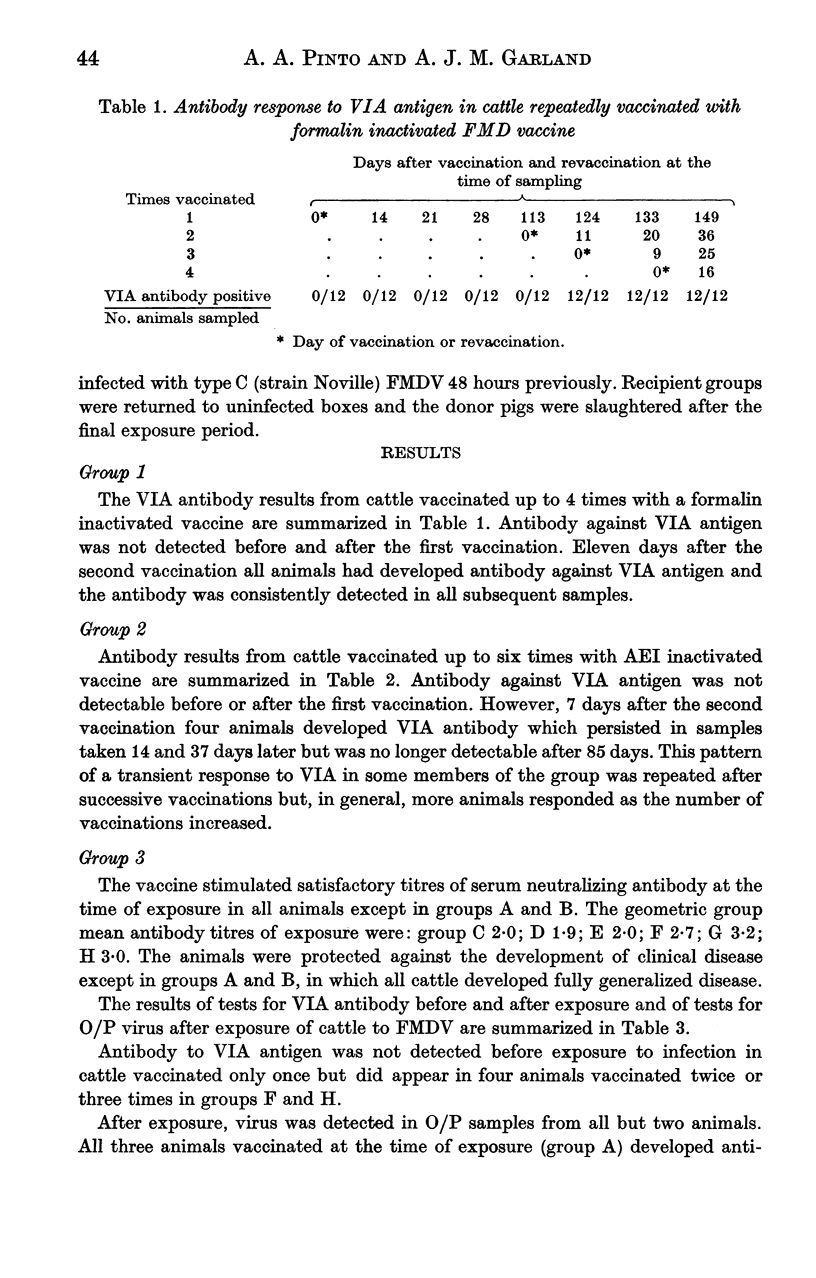
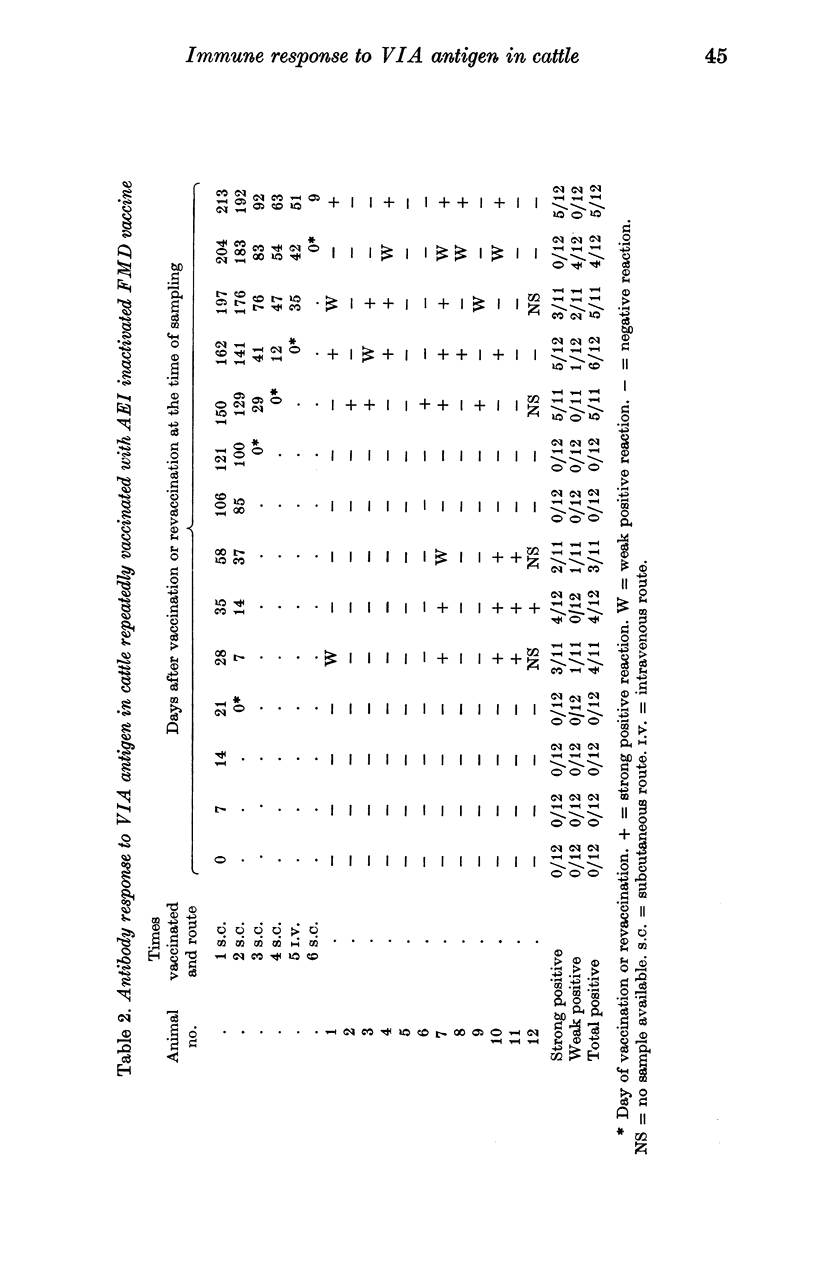
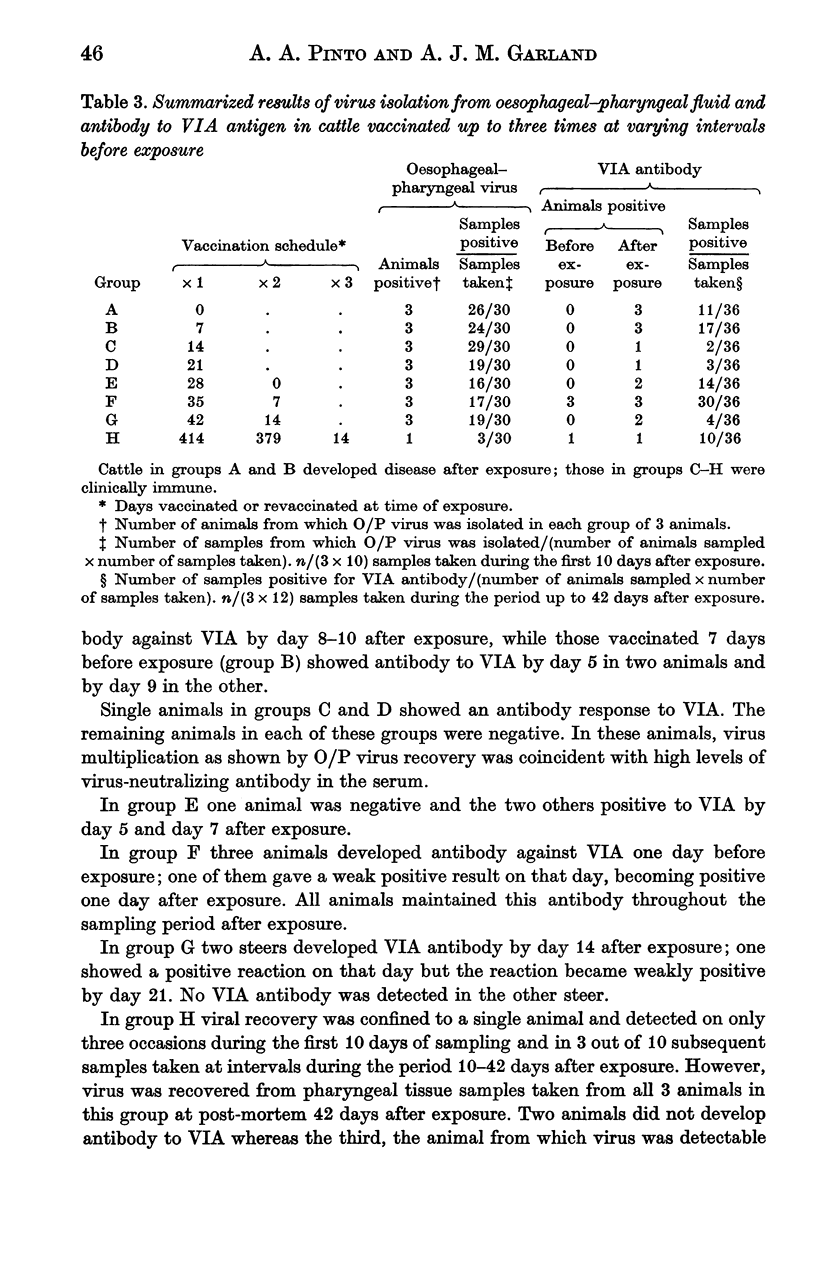
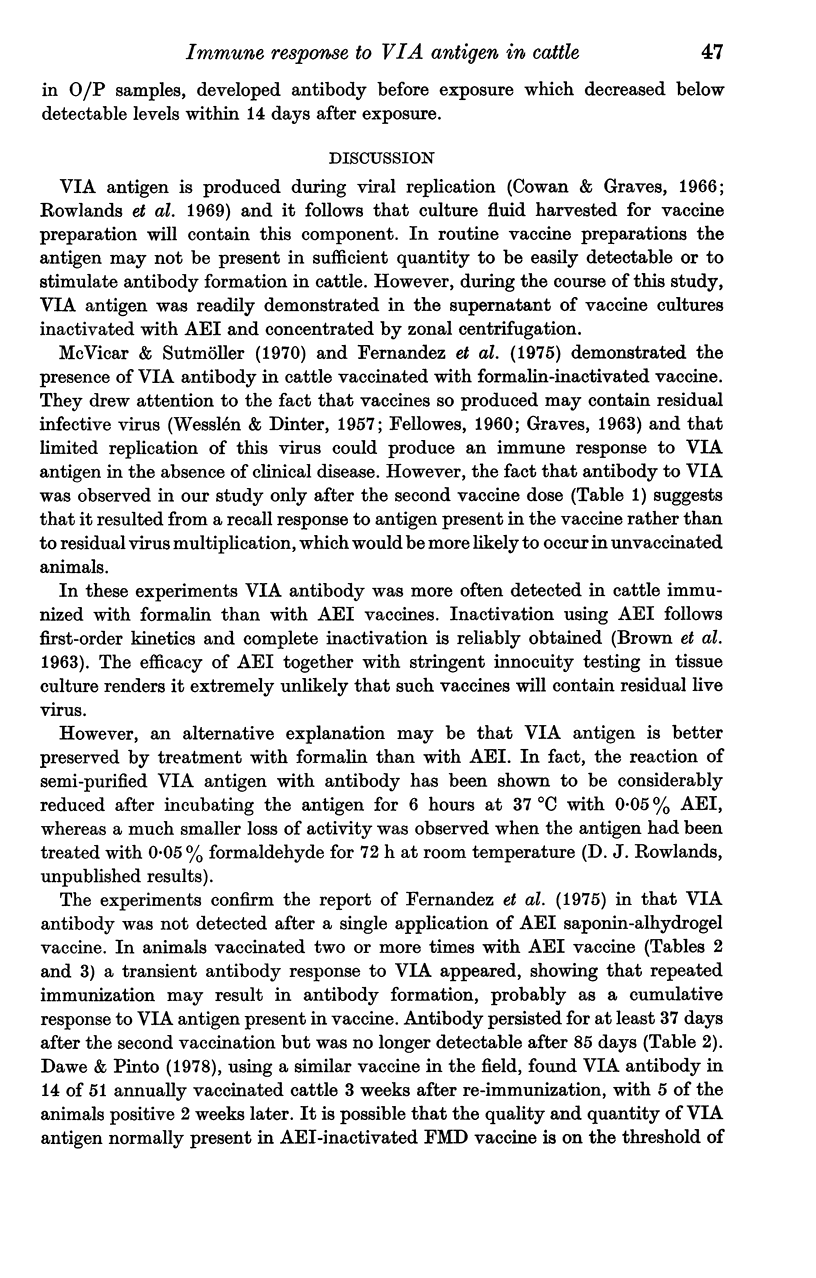

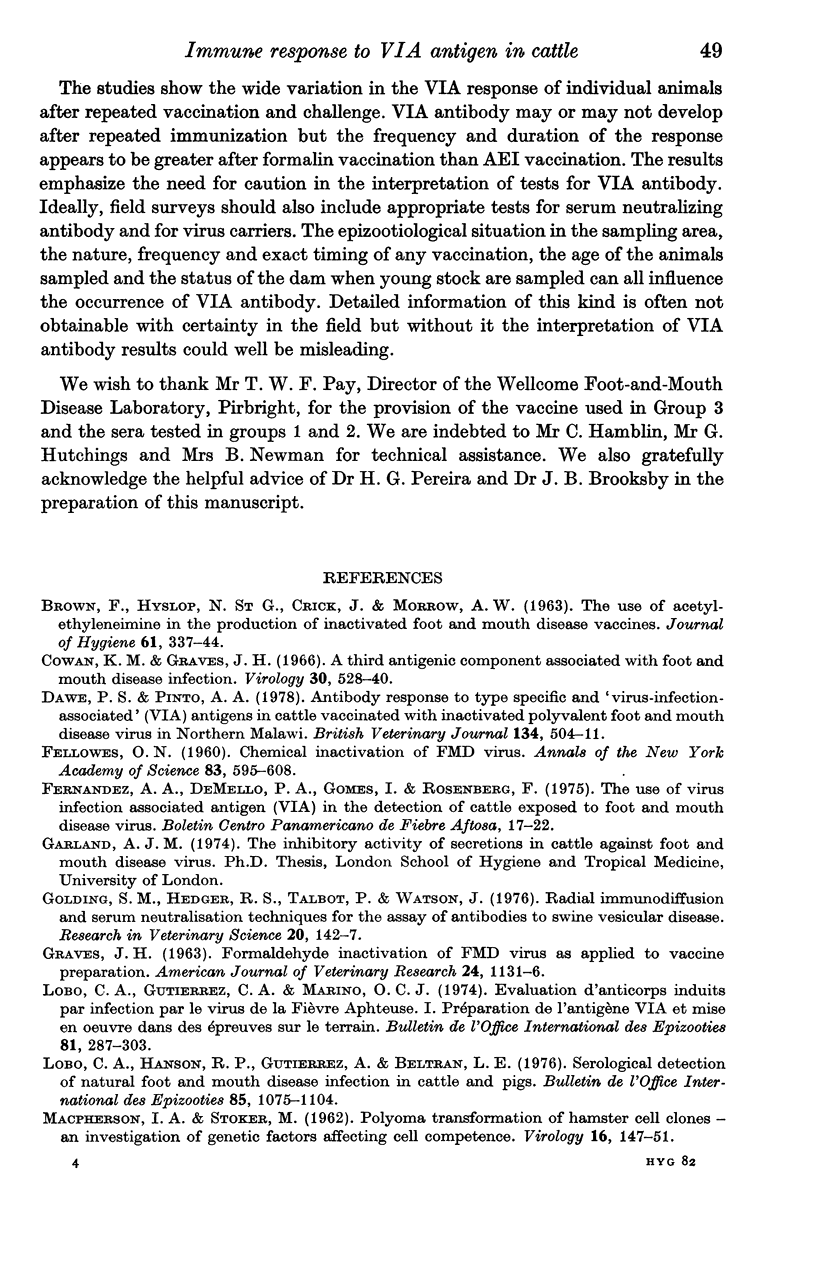

Selected References
These references are in PubMed. This may not be the complete list of references from this article.
- BROWN F., HYSLOP N. S., CRICK J., MORROW A. W. THE USE OF ACETYLETHYLENEIMINE IN THE PRODUCTION OF INACTIVATED FOOT-AND-MOUTH DISEASE VACCINES. J Hyg (Lond) 1963 Sep;61:337–344. doi: 10.1017/s0022172400039620. [DOI] [PMC free article] [PubMed] [Google Scholar]
- Cowan K. M., Graves J. H. A third antigenic component associated with foot-and-mouth disease infection. Virology. 1966 Nov;30(3):528–540. doi: 10.1016/0042-6822(66)90128-0. [DOI] [PubMed] [Google Scholar]
- Dawe P. S., Pinto A. A. Antibody responses to type-specific and "virus-infection-associated" antigens in cattle vaccinated with inactivated polyvalent foot and mouth disease virus in North Malawi. Br Vet J. 1978 Sep-Oct;134(5):504–511. doi: 10.1016/s0007-1935(17)33393-6. [DOI] [PubMed] [Google Scholar]
- FELLOWES O. N. Chemical inactivation of foot-and-mouth disease virus. Ann N Y Acad Sci. 1960 Jan 13;83:595–608. doi: 10.1111/j.1749-6632.1960.tb40932.x. [DOI] [PubMed] [Google Scholar]
- GRAVES J. H. FORMALDEHYDE INACTIVATION OF FOOT-AND-MOUTH DISEASE VIRUS AS APPLIED TO VACCINE PREPARATION. Am J Vet Res. 1963 Nov;24:1131–1136. [PubMed] [Google Scholar]
- Golding S. M., Hedger R. S., Talbot P. Radial immuno-diffusion and serum-neutralisation techniques for the assay of antibodies to swine vesicular disease. Res Vet Sci. 1976 Mar;20(2):142–147. [PubMed] [Google Scholar]
- MACPHERSON I., STOKER M. Polyoma transformation of hamster cell clones--an investigation of genetic factors affecting cell competence. Virology. 1962 Feb;16:147–151. doi: 10.1016/0042-6822(62)90290-8. [DOI] [PubMed] [Google Scholar]
- McVicar J. W., Sutmoller P. Foot-and-mouth disease: the agar gel diffusion precipitin test for antibody to virus-infection-associated (via) antigen as a tool for epizootiologic surveys. Am J Epidemiol. 1970 Oct;92(4):273–278. doi: 10.1093/oxfordjournals.aje.a121207. [DOI] [PubMed] [Google Scholar]
- Pinto A. A., Hedger R. S. The detection of antibody to virus-infection associated (VIA) antigen in various species of African wildlife following natural and experimental infection with foot and mouth disease virus. Arch Virol. 1978;57(4):307–314. doi: 10.1007/BF01320070. [DOI] [PubMed] [Google Scholar]
- Rowlands D. J., Cartwright B., Brown F. Evidence for an internal antigen in foot-and-mouth disease virus. J Gen Virol. 1969 Jun;4(4):479–487. doi: 10.1099/0022-1317-4-4-479. [DOI] [PubMed] [Google Scholar]
- Snowdon W. A. Growth of foot-and mouth disease virus in monolayer cultures of calf thyroid cells. Nature. 1966 Jun 4;210(5040):1079–1080. doi: 10.1038/2101079a0. [DOI] [PubMed] [Google Scholar]
- WESSLEN T., DINTER Z. The inactivation of foot-and-mouth disease virus by formalin. Arch Gesamte Virusforsch. 1957;7(4):394–402. doi: 10.1007/BF01240747. [DOI] [PubMed] [Google Scholar]


